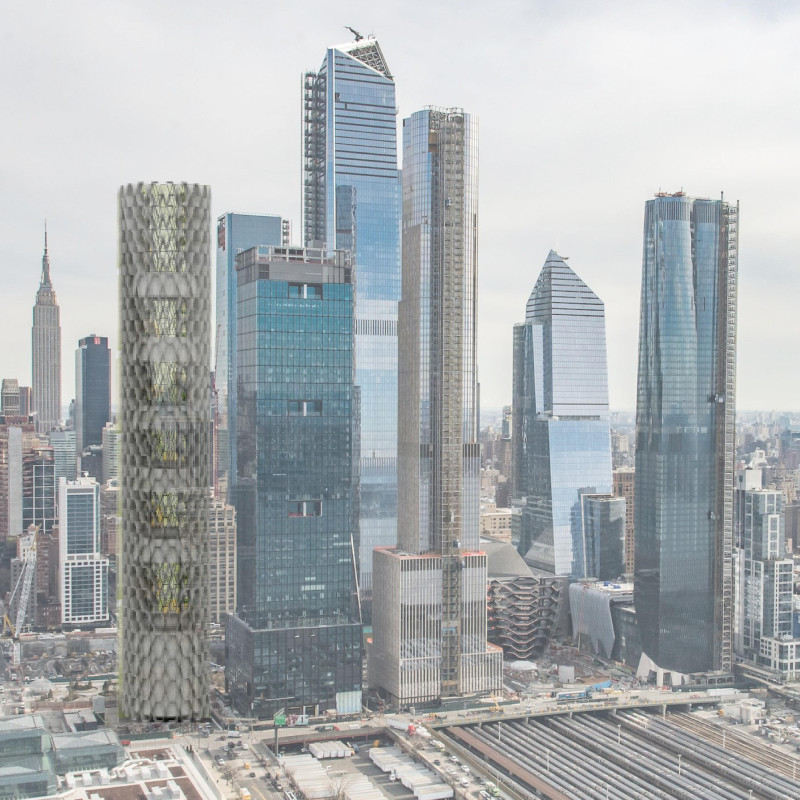5 key facts about this project
The Vertical Bee Farm project is located in Hudson Yards, New York City, and serves as a unique space dedicated to the conservation of bee populations. This skyscraper integrates ecological principles into its design, addressing the significant decline in bee numbers that has occurred over recent decades. The structure aims to foster a connection between urban residents and the natural world while creating a sustainable environment for both bees and humans.
Architectural Integration
The design incorporates concepts from nature, resulting in a self-sustaining structure that aligns human living with ecological needs. A significant feature of the design is the double skin façade. This element helps to reduce solar heat gain while acting as a greenhouse for residents and bees. It is designed to allow abundant natural light to enter, creating a welcoming atmosphere that benefits both occupants and pollinators.
Functional Design Features
The layout includes Hive Structures intended to enhance natural ventilation and improve water collection. These features support in-house food production, highlighting the commitment to sustainability. Each apartment includes an indoor green space designed to promote pollination. This element establishes a direct connection between the urban lifestyle and the surrounding environment.
Water Management and Sustainability
Effective water management forms an essential part of the Vertical Bee Farm. Rainwater harvesting systems capture and store rainwater from rooftops throughout the building. This approach reduces energy use related to water transport. The focus on rainwater highlights the project's aim of responsible resource management and eco-friendly practices.
Community Engagement
The building also serves as a center for community interaction and education about beekeeping. It hosts various educational programs, workshops, and public gatherings. These initiatives are designed to raise awareness of the role bees play in urban ecosystems. The goal is to promote a sense of ecological responsibility among residents and visitors.
The design incorporates features like indoor green spaces that not only enhance living conditions but also support bees, contributing to biodiversity in a city known for its concrete structures.



























